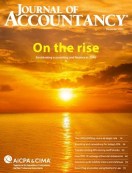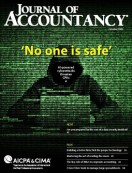QM is here: Advice from early adopters
Firms will need to learn from mistakes, fine-tune systems, and adapt to new ways of thinking about quality.

Related
Governmental Audit Quality Center analyzes 2025 OMB Compliance Supplement
New SEC chair to CPAs: ‘Back to basics’
PEEC releases clarifying guidance on independence in SSAE engagements
Firms that implemented a new quality management (QM) system early have had time to test the new approach, detect gaps, and improve what’s not working as well as they expected.
Anders started to design its new QM system two years ago and implemented it Oct. 1, 2024.
“We decided to early adopt the standard to have a year of implementation before our next peer review cycle started,” said Jeanne Dee, CPA, a partner at the St. Louis firm.
The early adoption gave the firm time to optimize its QM system before peer reviewers started scrutinizing its implementation and operation.
Wipfli LLP started work on its QM system early because the partners believed the new risk-based approach would require a significant amount of effort to document. Leaders from different service lines and functional areas came together to brainstorm relevant risks to their quality objectives, so that appropriate debate and refinement could happen well in advance of implementation, said Stephanie Cavadeas, CPA, a partner at the Milwaukee firm.
Wipfli designed its new QM system in early 2025 and is on track for implementation before the Dec. 15 deadline.
Switching to QM complies with the Statement on Quality Management Standards (SQMS) No. 1, A Firm’s System of Quality Management, which the AICPA Auditing Standards Board (ASB) issued in June 2022, and other related quality management standards. SQMS No. 1 introduces a risk-based assessment that firms use to design, implement, and operate tailored policies and procedures that manage the quality of their accounting and assurance practices and the engagements they perform.
SQMS No. 1 supersedes Statement on Quality Control Standards No. 8, A Firm’s System of Quality Control, which prescribes quality control (QC) systems that are largely static and checklist-based.
Firms have until Dec. 15, 2025, to implement SQMS No. 1, and firm leadership then has a year from the implementation date to perform an internal evaluation of the new QM system.
Early adopters such as Wipfli and Anders offer lessons learned that can help you finalize your QM system and confidently navigate its critical first year.
STARTING FRESH OR BUILDING ON A LEGACY
Anders used its existing QC system as the foundation of a new QM system. When the firm started designing the system in 2023, the QM standards were still new and “there wasn’t a lot out there by way of practice aids, implementation guidance, etc.,” Dee said.
Having the QC system as a starting point was convenient, but it subsequently required a lot of retrofitting.
“I’ve thought long and hard about if I could do it all over again, would I have started with our existing QC system and modified it, or would I have started with a clean sheet of paper?” she said.
In hindsight, Dee said, maybe her firm should have started from scratch, but that approach may not be appropriate for all firms. Each firm should consider carefully how to leverage its existing QC system, whether it be holistically or by mapping current policies and procedures to a new QM system, to allow the firm to maximize its current resources. Less-complex firms may find that beginning by leveraging their existing QC system eases the process; however, these firms will still need to consider if there are quality risks their system does not address.
Cavadeas said she and her team were careful to avoid inserting bias into their process, adding that it was important to not “work backward” by simply documenting previously identified risks that could be mapped by their existing policies and procedures.
“We really did start from scratch and say, ‘Let’s think holistically about our firm and what we do, perform a thorough risk assessment, evaluate the likelihood and magnitude, and see what’s left,'” she said. The team then focused on existing QC policies and procedures that could work with their results of the risk assessment and what policies and procedures needed to be created.
MEETING THE POWER AND CHALLENGE OF CUSTOMIZATION
A robust QM system is a customized set of policies and procedures that considers the nature and circumstances of a firm’s engagements. For example, the QM system of a firm that audits multinational corporations will be more complex than the QM system of a firm that is engaged only to perform compilations or reviews of financial statements.
Also, a robust QM system prioritizes continuous improvement. SQMS No. 1 outlines ongoing training and professional development for staff to stay current on auditing, accounting, and QM standards; the use of IT applications; and monitoring inspections — modernizing yet building on the firm’s current QC system.
Mark Wille, CPA, is a director with JLK Rosenberger, a firm with offices in Los Angeles; Irvine, Calif.; and Dallas, and a peer reviewer for the AICPA. He consulted with firms as they switched to a QM system and found that many midsize ones struggled with creating a customized QM system formulated to their engagements, services, and risks. He devised a five-step process and walked them through each exercise to help leaders design their QM systems appropriately, based on each firm’s specific nature and circumstances. Upon completion, Wille said the firms had a better understanding of their clients, services, staff, governance, and other processes — and could connect those lessons learned to designing a QM system tailored to their firm.
“The [standard] doesn’t tell you exactly what to do. It gives you the framework and the guidelines, the quality objectives, and then you kind of interpret from there,” Dee said. “This standard, in my opinion, is kind of the queen of principles-based standards because it gives you the more abstract guidelines, and you interpret it based on your practice, your firm, your partners, your market, [and] your clients. In theory, no two firms’ systems would be identical after implementation of QM.”
ADJUSTING TO A NEW WAY OF DOCUMENTATION
SQMS No. 1 outlines specific requirements for documentation.
During implementation, the firm’s QM system elements are clearly documented. This includes recording evidence that supports objectives, identifies risks, and details responses. These documents promote transparency, strengthen accountability, and may help uncover opportunities for improvement.
This approach to documentation may require an adjustment from what had been done under a QC system.
“The old-fashioned way of doing things [was] you put [the quality control documents] on a shelf. You take them off the shelf for your peer reviewer once every three years. And you put them back on the shelf,” Dee said. “I think those days are over … I think the policies and procedures book that you’ve created here needs to be a living and breathing thing. A huge theme of QM is that it’s iterative and evergreen. You’ll always [be] looking for new risks and responding to changes.”
In fact, SQMS No. 1 requires annual evaluation of the QM system by the firm’s managing partner. That reflects that firms are continually changing — client base, partner base, technology needs, etc. — in ways that could alter a firm’s risk profile. Frequent consultation and review of a firm’s QM documentation helps to ensure the firm is responding appropriately and remaining compliant.
“There are various tools out there that can help you document all aspects of the QM system,” Cavadeas said. Her firm needed the right organizational solution — Microsoft Excel wasn’t going to work. They settled on a cloud-based solution that would allow them to organize and document everything from start to finish. “We had the information; we just had to organize it in one place,” she said. “We’re also being intentional about reviewing it and reporting on it.”
It should be noted, however, that smaller firms have managed their implementation using less sophisticated software, relying on memoranda and spreadsheets to meet the documentation requirements in the standard.
THE FIRST YEAR AFTER IMPLEMENTATION
Looking ahead to the first year of operation, Cavadeas said her best advice is to be flexible. New risks, overlooked risks, business strategy shifts, process gaps, or failures may spring up. This is the time to learn from those instances and work toward improving and bolstering the QM system.
“Don’t focus on right and wrong. There is no right and wrong,” she said. “Your QM system is going to evolve. You will think of something a year from now that you didn’t think of today.”
Wille shared those sentiments.
“Do I think all of us are going to fall short and not have every risk down? You bet,” he said. “The real key here is every person in the accounting and assurance departments needs to understand … that this is a year we’re all going to constantly evaluate [the QM system] together.”
Dee acknowledged that the QM journey requires a lot of effort, but what may be the biggest lift is operating with a new mindset. The first year of your firm’s QM system demands a firmwide collaboration, but the payoff will be a stronger, more accountable culture — one where every team member contributes to elevating quality across the board.
“I think in order to get this right and really, really meet the spirit of the standard, you’re going to have to embrace this as a pretty significant paradigm shift into a new way of thinking about quality,” Dee said. “It should be you’re really … making this part of your culture.”
About the author
Jamie J. Roessner is a senior content writer at the Association of International Certified Professional Accountants. To comment on this article, contact Jeff Drew at Jeff.Drew@aicpa-cima.com.
LEARNING RESOURCES
Advanced accounting and auditing technical content is a big part of the biggest event in the accounting profession, which will celebrate its 10th anniversary at the ARIA in Las Vegas. Don’t miss it!
June 8–11
CONFERENCE
The Private Companies Practice Section (PCPS) is an add-on firm membership section within the AICPA that supports CPA firms of all sizes in the everyday intricacies of running a practice by providing practical and customizable practice management resources. For more information, click on the PCPS membership headline above.
SECTION
For more information or to make a purchase, go to aicpa-cima.com/cpe-learning or call 888-777-7077.
MEMBER RESOURCES
Articles
“Implementing the New Quality Management Standards: FAQs,” AICPA, Aug. 21, 2025
“AICPA Unveils New QM Resources to Help Firms Meet Dec. 15 Deadline,” JofA, Aug. 12, 2025
“8 Steps to Build Your Firm’s Quality Management System on Time,” JofA, Aug. 12, 2025
“How the New QM Standards May Affect Peer Review,” JofA, Dec. 10, 2024
“Engagement Quality Reviews: What Auditors Should Know,” Dec. 9, 2024
Website
A Journey to Quality Management: Resources and information for launching or establishing your QM system
Tools
Peer Review Pilot Quality Management Checklists
Practice Aid, Establishing and Maintaining a System of Quality Management for a CPA Firm’s Accounting and Auditing Practice (2025 Update)
Practice Aid, The Monitoring and Remediation Process for a Firm’s System of Quality Management



















